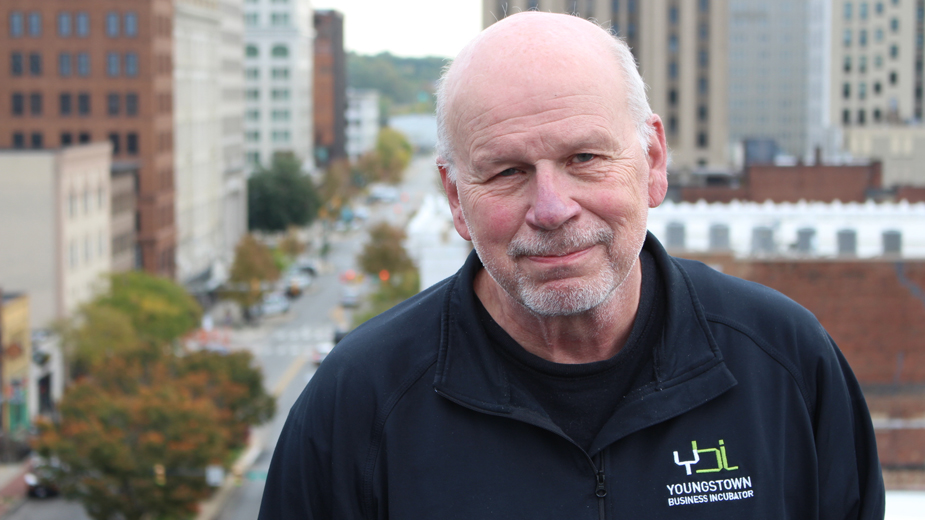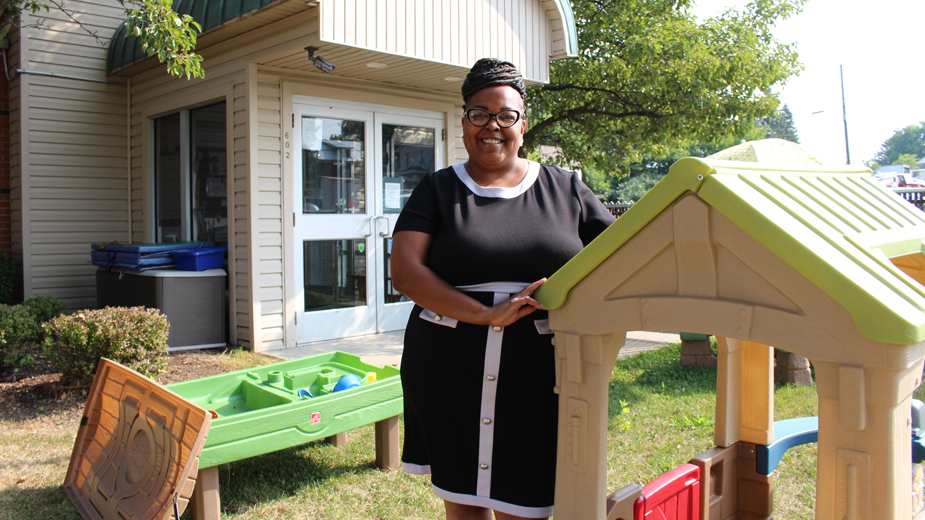Nonprofits Reassess Impact, Funding Sources
By Jeremy Lydic
YOUNGSTOWN, Ohio — Come 2019, changes to the way nonprofit organizations report the results of grant-funded programs will demand higher accountability – and directors say that’s a good thing.
At least, it’s good in that it will lead organizations to reassess how the money is spent and roll out more focused programs and services.
However, more in-depth reporting will put a greater burden on an organization’s overhead costs, says Wilma Torres, CEO and president of the Community Action Partnership of Mercer County in Sharon, Pa.
“We are the stewards of those dollars and we have to make sure that we’re efficient in how we’re using those dollars,” Torres says. “But as overhead costs constantly go up, the grants are not keeping in line with the costs that are going up. That’s unfortunate, because that means we have to scale back on some of the things that we may be doing.”
For at least the last eight years, the organization’s Community Service Block Grant funding has remained at $250,000, which helps fund Mercer County’s Head Start, Early Head Start and Pre-K Counts programs, Torres says.
The programs serve children of low-income families and comprise $4 million of the organization’s $7 million budget.
But as costs rise, so does need. This year, the Head Start and Pre-K programs – which are provided in partnership with the Farrell Area School District – served 521 children, up from 508 in the 2014-2015 school year. The agency serves people at 100% to 300% of the poverty line, and of the more than 100,000 residents in Mercer County, 14% live in poverty, according to Torres.
Community Action Partnership is reassessing Mercer County’s needs, says CEO Wilma Torres.
All of the agency’s programming is grant-funded, so the number of people served is determined by dollars received, Torres says. The agency submitted a grant for Pre-K Counts dollars to fund another 20 students, but received funding for just two more, she says. There is a waiting list for the 279 units in the agency’s senior housing program, “which tells you of the need,” she adds.
“They’re all income-based, so you have to meet a certain income guideline,” she says. “Some of them are subsidized.”
Changes in grant-funding accountability represent a “paradigm shift” in how Community Action Agencies will operate, says Shelia Triplett, executive director of the Mahoning-Youngstown Community Action Partnership, or Mycap.
So-called entitlement programs are usually one-time payments, such as the Home Energy Assistance Program, or HEAP, and make up the largest portion of the agency’s $4.9 million budget, she says. Now, rather than just reporting the number of people served, agencies are tasked with following up with those residents and reporting concrete outcomes, Triplett says.
“Previously, all we had to do was say ‘We saw 5,000 people during the winter HEAP program.’ And they never asked you what happened to those 5,000 people,” she says. “Now they are going to ask. They want to know if while we had that person in front of us that we did more than just pay their utility bill.”
That can mean anything from steering a resident toward job training, addressing any issues with substance abuse or referring that resident to treatment or education programs, she says. Charting that progress will require extensive reporting that will be compared nationally to similar programs that provide similar services.
And while state and federal grant administrators haven’t explicitly said they will tie funding to outcomes, “You’d have to be dense not to know that’s the direction it’s heading in,” Triplett says.
This has led to organizations like Mycap weighing fundraising options, something that the agency has never needed to do, she says. While Mycap can accept donations, it’s currently not set up to. Triplett is in the process of making that possible.
“It’s almost for your survival that you’re going to have to do that because the funding levels have decreased,” she says. “For us to continue to be successful, we can’t rely on just the monies that we get from the state. We’re going to reach out to foundations and have people in this community see that we are an integral part of its stability.”
Fundraising would help Mycap diversify its services to make the bigger impact that the state and federal governments are seeking, Triplett says. While the need for entitlement programs will always be there, Triplett looks to give more attention to areas where it can effect lasting change, she says.
This year, Mycap collaborated with Neil Kennedy Recovery Centers to launch an initiative to address Youngstown’s infant mortality rate, which is in the top five in the state, she says. The initiative focuses on pregnant, chemically dependent women.
In 2016, the state’s infant mortality rate was 7.4 per 1,000 live births for all races, and 15.2 for black babies, according to the Ohio Department of Health. In Mahoning County, the overall infant mortality rate was 6.0, with the rate for black babies at 15.7. Of all infant deaths in Mahoning County that year, 66.7% were identified as non-Hispanic black.
“Youngstown has one of the highest infant mortality rates in the state,” she says. “It’s improving a little. But with the emergence of opioids and those kinds of things, you’ve got a larger population of women who become pregnant while they’re still using.”
Mycap hired a community health worker and is seeking women for its program through different organizations. The agency schedules weekly home visits until the baby is born, and if a woman needs inpatient treatment for addiction, she is sent to Neil Kennedy where the weekly visits continue, Triplett says. After treatment, Mycap helps the woman find a residence.
Mycap follows up with the new mother for up to 12 months, “ensuring that you’ve got a healthy mom and a healthy baby,” she says. About $180,000 from Mycap’s block grant funds the program. Just two months in, Mycap is already working with five women and hopes to identify at least 30 to enroll.
“It’s a developing program,” she says. “First people need to know that we’re here, know what we’re doing.”
Community Action in Mercer County looks to focus its efforts as well. The agency will release in December a preliminary report on a community needs assessment, followed by a final report in February, says CEO Torres. Transportation is proving to be a consistent need in its service areas – Mercer, Beaver, Allegheny, Erie, Lawrence and Butler counties.
“We have individuals who don’t have their driver’s license … or don’t have a vehicle that can pass inspection,” she says. “And then there’s mass transportation. The question is, is there sufficient mass transportation to get people to where they need to get and are there correct routes?”
After identifying the specific needs, the partnership will apply its resources where it can and partner with other organizations to alleviate transportation issues, Torres says.
“We’re not trying to be Superman,” she says. “We understand the value of the partnerships of other people in the community who are doing things.”
The Buhl Regional Health Foundation in Sharpsville, Pa., looks to do the same Nov. 2 with its Fall Health Forum, says Executive Director Michaelene “Mickey” Gula. This is the organization’s third forum since it was founded in May 2016 when Sharon Regional Health System was sold to Community Health Systems of Tennessee.
The first two forums gave the organization a general idea of the areas that need the most focus, including community and individual health, mental health, transportation and food insecurity, Gula says.
The third forum will focus entirely on opioid addiction and will include a panel discussion with the county coroner, Dr. John Gallagher, who is the chairman of the Pennsylvania Medical Society’s Opioid Advisory Task Force, and Judge John Reed from the Mercer County Court of Common Pleas to talk about treatment court.
“That’s important because this is the first time in Mercer County where we will have a drug treatment court to try to help address the issue of someone who has committed maybe a small crime to seek funds to purchase the opioids,” Gula says. “You can’t put everybody in jail. It’s not a treatment place.”
Buhl Regional Health Foundation was founded in 2016, says Executive Director Mickey Gula.
Other panelists include representatives from the Mercer County Behavioral Health Commission, the ROAR (Removing Obstacles to Assist Recovery) Center in Sharon, Pa., and those from faith-based organizations. Gula invites health-care workers and the public to attend because she wants the forum to foster collaboration between service providers and county residents. More than 200 people attended the first forum.
“We all need to collaborate on some of these programs, whether you’re providing the transportation, the counseling, or feeding someone,” Gula says. “We find that there are similar groups of people using all of these services.”
While the foundation isn’t necessarily looking to raise funds, it’s not out of the question down the road, she says. With a budget of $20 million, it has distributed some $650,000 to health- care-related projects in the area, such as the local association for the blind, backpack programs for more than 900 children and Penn State Shenango’s Stamp Out the Stigma program.
“Depending on how things go, there may be a time when we narrow our focus more to contribute to one or two larger focus areas,” Gula says.
Collaborating with other organizations helps the foundation promote its own goals, but can help overcome other issues not necessarily related to health care, Gula contends. Promoting a healthy community plays a role in the overall economic development of the area, she says.
“We’ve had an exodus of young people. We have to find a way in these smaller Rust Belt communities to reinvent ourselves, to find employment here for people,” she says.
Nonprofit organizations need to be seen as one of the community’s economic drivers, Torres says. Community Action brings $7 million to Mercer County and “it’s not staying in this agency.”
The agency works with local contractors for roofing, weatherization and HVAC programs. Between its 30-person staff and the Head Start staff in Farrell, it employs about 140.
“When you look at all the nonprofits here, look at us as part of the business community and look at us as part of that economic engine,” Torres says. “We welcome everyone to visit us and get to know us and access our programs.”
Pictured above: Mycap is looking at funding sources other than government grants, says Executive Director Shelia Triplett.
Copyright 2024 The Business Journal, Youngstown, Ohio.



